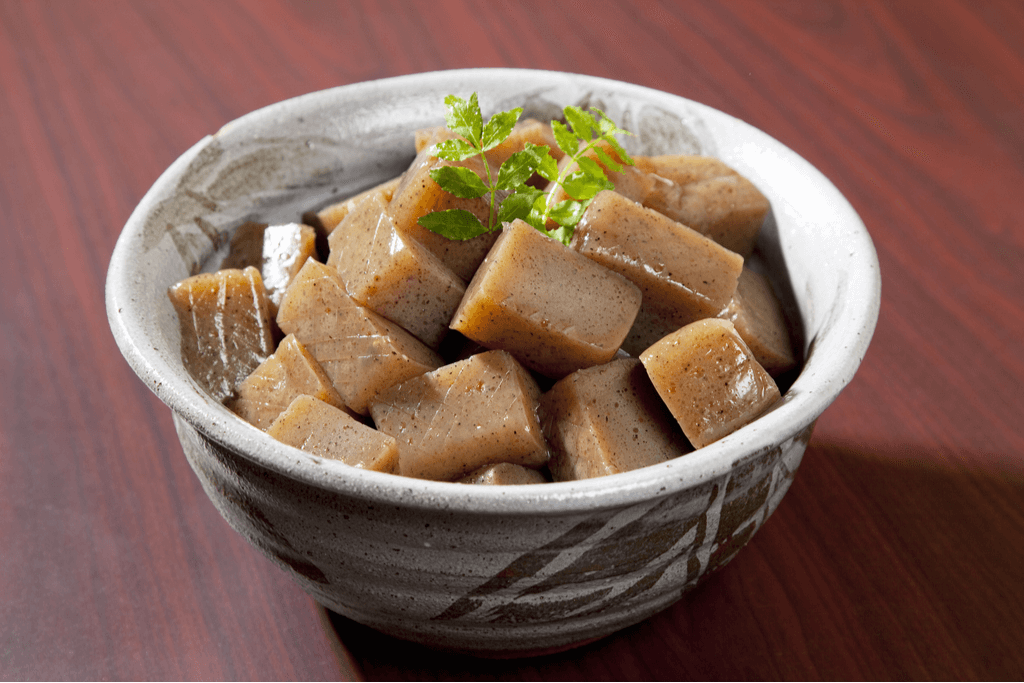People in Japan often prepare and consume konjac jelly, a nutritious vegetable. Despite not being famous, it is an enjoyable ingredient in various Japanese cuisines, including stews, bento boxes, and fruit jellies. Are you interested in learning more about this healthy gelatinous cube? Here is everything you need to know about konjac jelly.
Table of Contents
ToggleDevil’s Tongue Yam: What is Konjac Jelly?
Konjac jelly, or konnyaku (こんにゃく), is made from the starchy konjac plant, which belongs to the same family as the taro and the yam. The elephant foot yam and devil’s tongue are alternative names for the konjac plant. People grow the plant in various parts of Asia, which has been in China for centuries. The plant even found use in traditional Chinese medicine, and people introduced it to Japan as a medicinal food in the sixth century.
The process involves mixing konjac powder from the root with water and a gelling ingredient, which results in the mixture solidifying into a firm, rubbery cake. It has a similar texture to gelatin but is significantly denser. The color of the jelly typically depends on whether hijiki (seaweed) is in the powder, resulting in the characteristic dark greyish color, or if no additions are present, allowing the jelly to remain white.
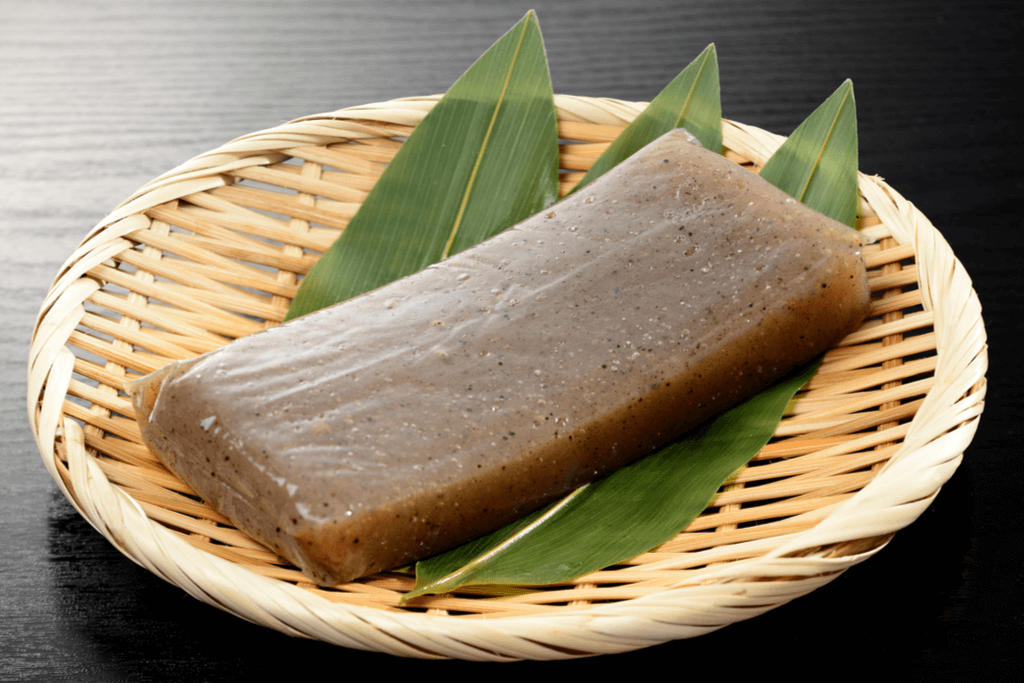
Konjac jelly itself might have a subtle flavor or be altogether flavorless. Even though it lacks flavor, the bouncy texture will be a unique addition to any dish and allow added sauces or broth to bring flavor to the jelly.
Furthermore, in the case of thickening sauces, konjac flour, which includes glucomannan, is typically a better natural substitute for xanthan gum, which is fermented sugar. In general, why is konjac jelly so beneficial? Let’s take a closer look.
Are you interested in experiencing traditional Japanese cuisines and snacks from the comfort of your own home? Sakuraco sends locally sourced, authentic Japanese snacks, sweets, and teas, so you can taste Japan wherever you are.
The Benefits: Is Konjac Jelly Good for You?
Just like the incredibly nutritious Japanese tofu, the health benefits of konjac jelly are numerous. Water makes up the vast portion of this gelatinous block. As a result, it is high in fiber, sugar-free, and has no fat or protein.
It has various health advantages, with merely water and fiber as its primary ingredients. For example, it can help decrease cholesterol levels. The high fiber promotes healthy digestion, making you less bloated and more relaxed.
It is also a low-calorie food while being incredibly filling. As a result, it’s popular as a dietary supplement and a weight-loss food. In addition, it can also help to strengthen your immune system and promote healthy skin.
Famous Japanese Cuisine with Konjac Jelly
Konjac Fruit Jelly
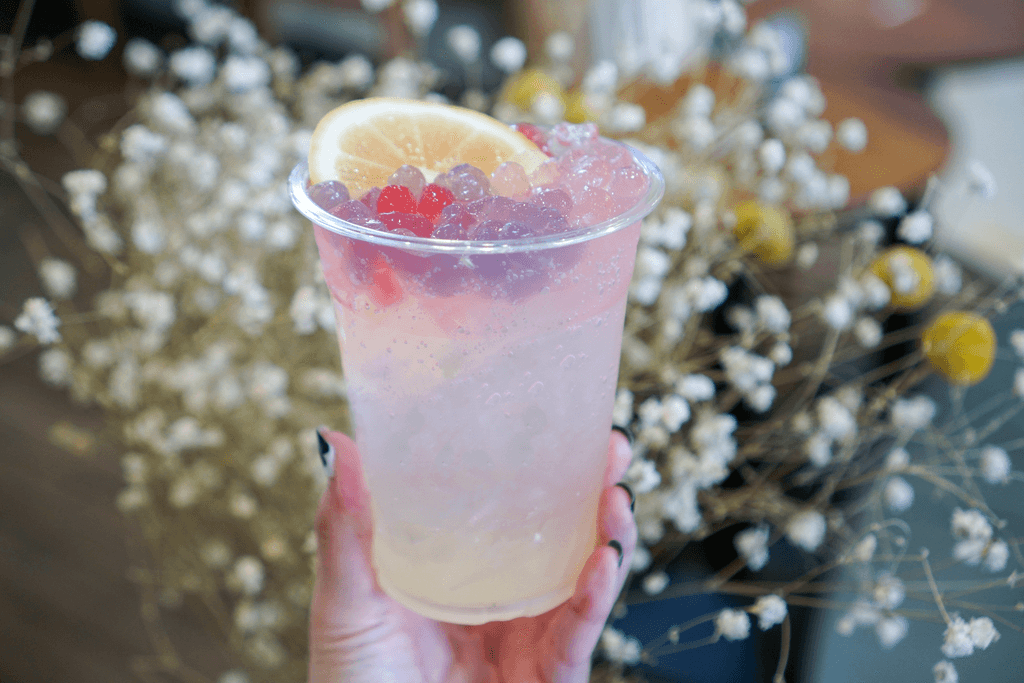
Japanese fruit jelly, as a whole, is a delicious snack and dessert that can be enjoyed at any time of the year. If you’re looking for delicious and filling healthy Japanese snacks, konjac fruit jelly might be just what you’re looking for. Peach, lychee, manga, grape, and other sweet and tangy fruits are popular flavors in konnyaku jelly.
What’s surprising and unique about konjac fruit jelly is that, unlike gelatin, it doesn’t dissolve easily inside the mouth. It requires chewing like a gummy but with a healthier substitute that is just as tasty as regular Japanese fruit gummies. Konjac fruit jellies frequently have vitamin C and collagen, adding to the already impressive list of health benefits.
Konjac Jelly Noodles (Ito-konnyaku & Shirataki)
Shirataki and ito-konnyaku are two gelatinous, translucent noodles created from konjac jelly. They are made out of 97% water and 3% konjac fiber. Shirataki translates to “white waterfall” in Japanese, referring to its appearance.
Shirataki and ito-Konnyaku used to be fundamentally different from one another. The reason is that they were created using different methods depending on the region in Japan. The Kanto method made the shirataki, while the Kansai method made the ito-konnyaku. However, people often use the traditional Kanto method to make shirataki and ito-konnyaku, leading to the interchangeable use of both names. The slight difference between them lies only in the appearance and size of the noodles. Nevertheless, people can use both noodles in various traditional Japanese dishes.
Sukiyaki and nabe are mouthwatering hotpot cuisines that feature boiling various vegetables and meats, with konnyaku noodles as a flavorful addition. Gyudon (beef rice bowl) and ramen can also be served with konjac jelly noodles. In other words, it can be an excellent addition to these delicious hot foods and a great low-calorie substitution.
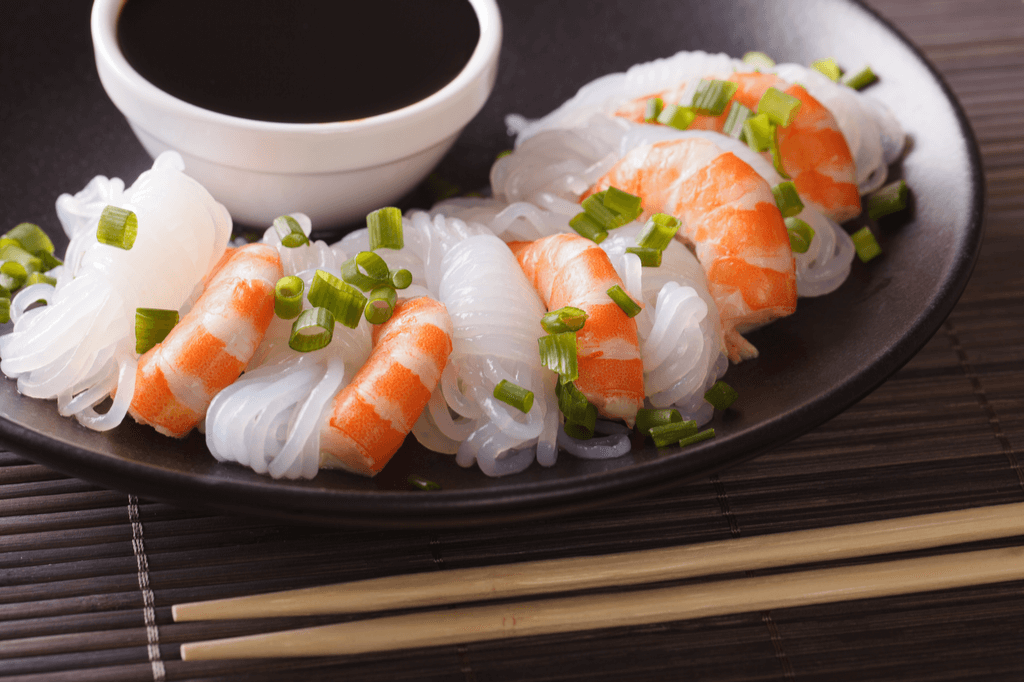
Konjac Jelly in Soups
The simplest way to use konjac jelly is to cut the block form or ita-konnyaku into smaller pieces and add it to various soups or hotpots. It’s a popular ingredient in the Japanese dish, oden. Oden is a traditional Japanese festival food and a dish that keeps one warm during the winter.
It includes konjac jelly and an assortment of fish balls, fish cakes, deep-fried tofu, and other vegetables occasionally seasoned with miso. It provides excellent texture and satisfyingness to any steaming hotpot or soup dish.
Sashimi Konjac Jelly
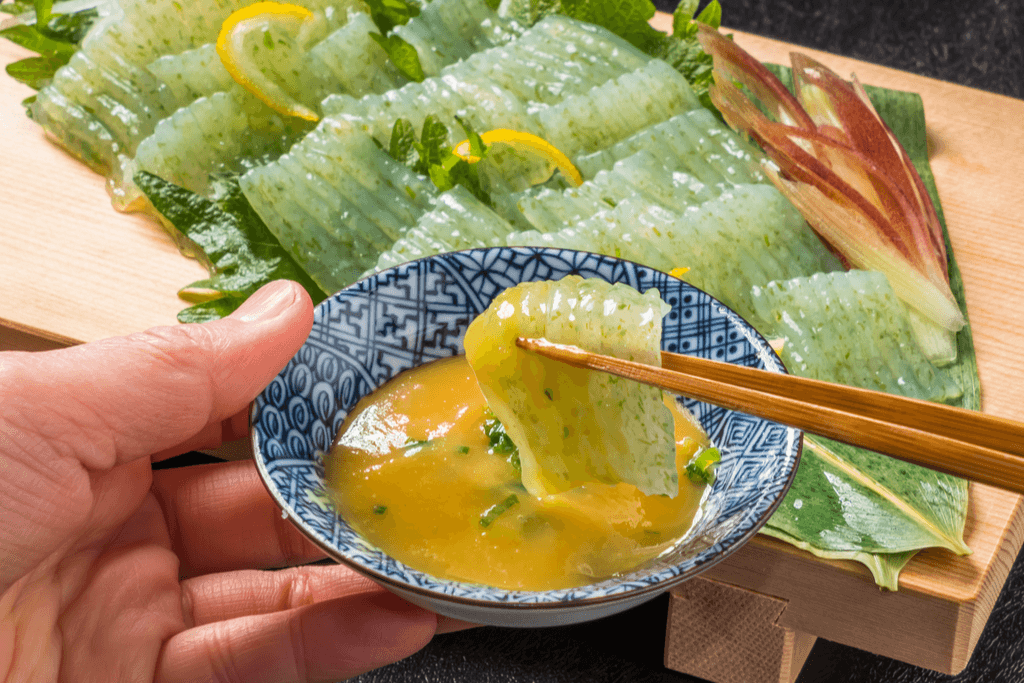
Suppose you’re searching for an alternative to the classic, delectable sashimi (sliced raw fish or meat). In that case, konjac jelly can be a tasty vegan substitute with added flavors like seafood or citrus. The jelly is sliced thinly like regular sashimi and is sometimes dyed green to show that it has been flavored with citrus.
Sashimi konnyaku has a more tender texture but is still chewy. It is usually enjoyed with wasabi and soy sauce or a sweet miso and mustard sauce. It can be as refreshing as a salad or an iced sencha green tea but is more filling.
There are numerous other ways to include konjac jelly in one’s diet. You can benefit from the high fiber and low calories by adding it to any soup or using konjac noodles for ramen. Moreover, if you ever visit Japan, you’ll hopefully be able to tell now what those greyish cubes in your hotpot or oden are, and as a result, fully enjoy eating it even more, knowing it’s healthy. Don’t forget to try the sweet and refreshing konjac fruit jelly. What are your thoughts on konjac jelly? Which of these Japanese konjac jelly dishes do you want to try?

